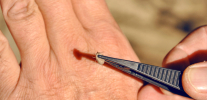
The simplest polls show that often the perception of the danger of ticks and the tick-borne encephalitis they carry are rather vague, not only among school-age children, but also among adults. That is why newsletters and stands with the headings "Caution, ticks!" Are actively used in clinics, kindergartens and schools.
Further, key information will be presented on the dangers associated with tick bites, as well as on the rules of behavior in nature, compliance with which can significantly reduce the risk of attacks of these parasites and the likelihood of infection from various infections. Parts of this article can be used for the manufacture of newsletters, memos, stands. On the basis of it, it is possible to conduct classes in preschool, parents' consultations and class hours in schools.
So, let's see what you first need to know about ticks and the dangers for a person associated with their bites ...
Caution: Ticks!
Ixodic tick bites are one of the often underestimated hazards that a person may encounter when going out into the countryside, staying in the countryside and even just while walking in the green areas of cities in the spring-summer period of the year. With the bites of these arthropods, it is possible for a person to be infected with deadly infections, and the treatment of the diseases they cause is difficult and does not always end successfully.
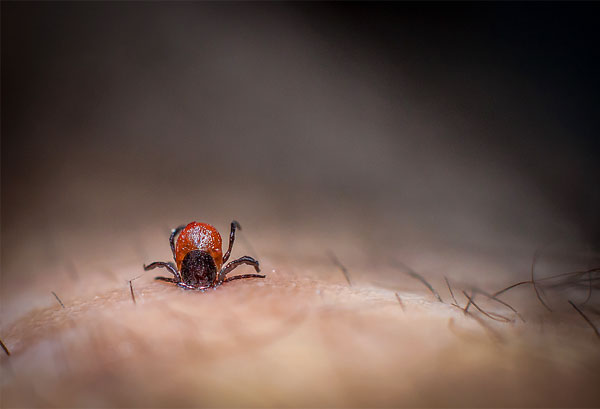
At the same time, even with high numbers in the territory, ticks are hardly noticeable, and they can wait in the wild, as well as in parks and courtyards within the city limits. Thanks to the anesthetic injected into the wound, their bites are painless, and the parasite is often found only at the stage of blood-sucking, when the infected saliva has already fallen into the wound.
It is important to understand that, unlike stinging insects attacking a person in self-defense, ticks attack people intentionally, since their survival and reproduction directly depend on the bloodsucking.Millions of years of evolution have provided the parasite with a very effective body structure and tactics of behavior, which together provide high chances of finding the victim (the owner).
This means that in order to protect against tick bites, you need not only to behave intelligently in nature (this is not enough!), But also to take special measures, which we'll talk about a little later.
Ticks and tick-borne encephalitis
Ticks are arthropod animals belonging to the arachnid class. Today, there are more than 54 thousand species in the world (and some experts believe that the actual number of species of ticks, taking into account the forms that have not yet been described, may be many times larger).
Different types of ticks vary considerably in lifestyle, diet and habitat. Most of them are completely harmless to humans, and some even provide benefits for agriculture.
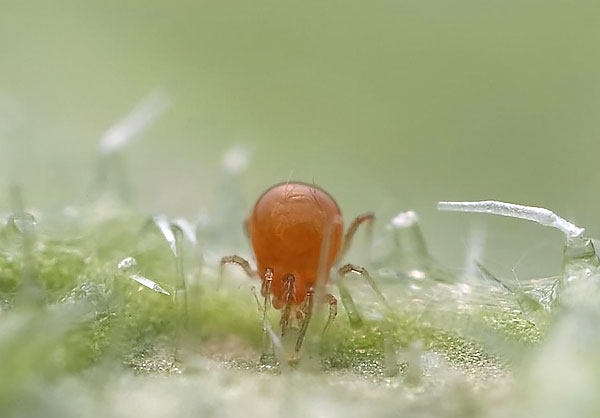
The most dangerous for humans are the so-called Ixodes ticks - a relatively small group of species that are highly specialized parasites of large animals and humans. They feed on blood, and for satiation, growth, development and reproduction they need to consume the blood of host animals.For this reason, the way of life, the structure of the body and the habits of ticks are maximally adapted to the waiting for animals, attacking and sucking the maximum possible amount of blood for these arthropods.

In itself, the bloodsucking of ticks, although unpleasant for a person, is not a significant danger. Bites can cause severe allergic reactions in only a small number of people. Those types of ticks, the bites of which are extremely painful and allergenic, are rare in Russia.
The most dangerous are infections, the pathogens of which develop in tick organisms and can be transmitted to humans when they are bitten. Of these infections, two are most significant:
- Tick-borne encephalitis;
- Lyme borreliosis (Lyme disease).
Both of them can lead to death or disability of an infected and sick person if he is not provided with medical assistance in a timely manner.
In addition to these diseases, ticks also carry anaplasmosis, Marseilles fever, tularemia and some other diseases.
Tick-borne encephalitis is considered the most dangerous disease carried by ticks.This disease is quite difficult to treat, and, due to brain damage, irreversible neurological and mental disorders are possible, and in the most severe cases, the death of a sick person.
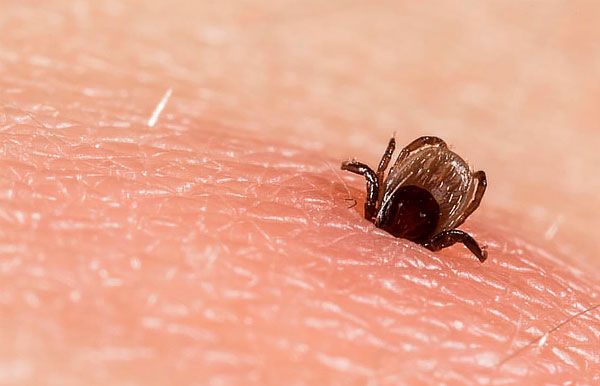
Not every ixodid tick is a carrier of pathogens of these diseases, and not even every bite of a really infected tick leads to the development of a disease. According to statistics, even in the most epidemiologically dangerous regions, only 6% of ticks belonging to the carrier vectors of encephalitis and borreliosis are infected with these infections. And out of 100 people bitten by infected parasites, only 5-6 develop encephalitis or borreliosis.
On a note
These numbers seem small: in fact, out of 10,000 tick bites, only 20–25 result in infection. However, in reality, even with such a low infection, ticks are dangerous because of their large numbers. In late spring - early summer, several million ticks of different ages can be found in the grass layer of 1 hectare of sparse deciduous forest, and during a typical hour walk on a person’s clothing or body several dozen parasites can fall.People who are constantly in nature for one reason or another (workers in agriculture and forestry, landscapers, fish farms, gardeners) are bitten by ticks regularly, and even city dwellers are bitten at relatively rare nature trips.

The greater the number of ticks at the same time began to suck on a person, the higher the probability of infection. According to statistical data, the most severe cases of tick-borne encephalitis were recorded in hunters and fishermen, from whose body several dozen sucking parasites were removed from their bodies after they left for nature.
In Russia, Ukraine and Belarus, the main species-carriers of tick-borne encephalitis are:
- Canine mite (Ixodes ricinus), common in the European part of Russia, in Ukraine and in Western Europe;
- Taiga tick (Ixodes persulcatus) living in Siberia and the Far East.
A carrier of the virus was also registered in some other species of ixodid ticks, but their epidemiological significance is much lower.
The dog and taiga ticks are very similar in appearance, and only a specialist can reveal the differences between them.
For example, the photo below shows a dog tick:
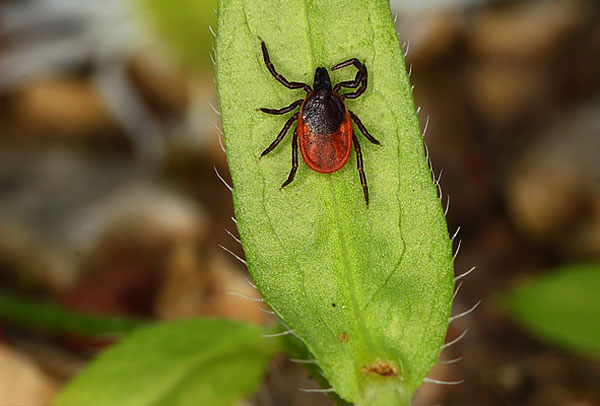
And here - taiga tick:
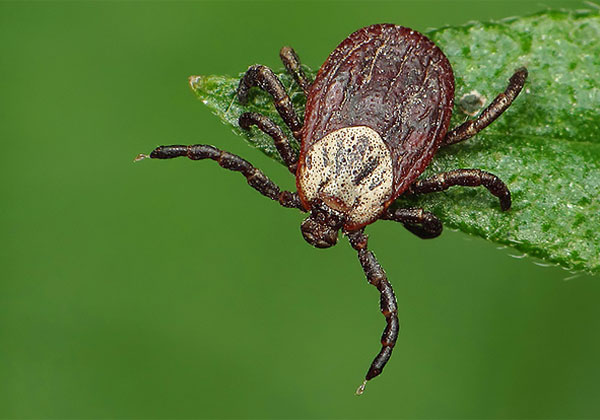
Moreover, under natural conditions, it is difficult for a non-specialist to distinguish between types of ticks of encephalitis and those that the virus does not tolerate. Therefore, it is considered that any forest tick can potentially infect a person with a bite, and they are often referred to as encephalitis ticks in everyday life, which is not entirely correct.
Where they live and how ticks bite
In summer and spring time, adult Ixodes mites keep on the grass, lower branches of bushes, on the ground, waiting for the appearance of a person or any large animal next to them. When the parasite feels the approaching victim, it pulls the front pair of legs forward and above it, and if a person touches a blade of grass on which the parasite is located, he immediately clings to the clothes or skin with his paws and presses against it. Then the parasite crawls to the most appropriate part of the body, bites through the skin, reaches the blood vessel with chelicera, pierces it and begins to suck blood.
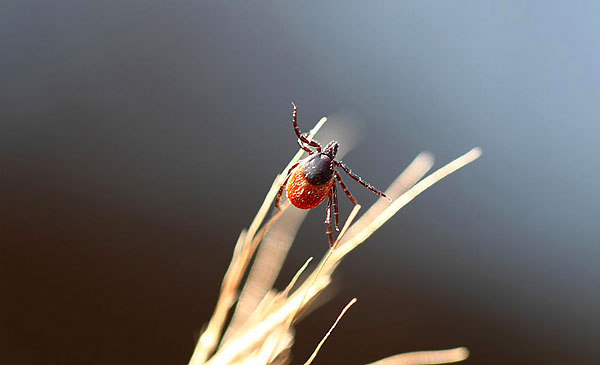
On a note
Also, ticks can move to humans from domestic animals (for example, when milking cows) and attack from the branches of low shrubs, but this rarely happens.
The structure of the body and mouth organs of the mite is such that after the start of bloodsucking, the parasite is very securely fixed in the skin, in which its head is almost completely immersed. Removing it from the body is very difficult - in many cases, if not properly extracted, the body of the parasite comes off the head. If after that the head is not removed from the skin, an abscess and suppuration may develop in this place.
A tick sucks blood for a long time - from several hours if it is a small, immature individual (nymph), up to 3-4 days if it is an adult (imago). Females that need a large amount of food for the development of eggs feed especially long. The digestive system and the body of the mite are adapted to receive large amounts of blood, and therefore during feeding the size of the arthropod can increase several times and the weight hundreds of times.
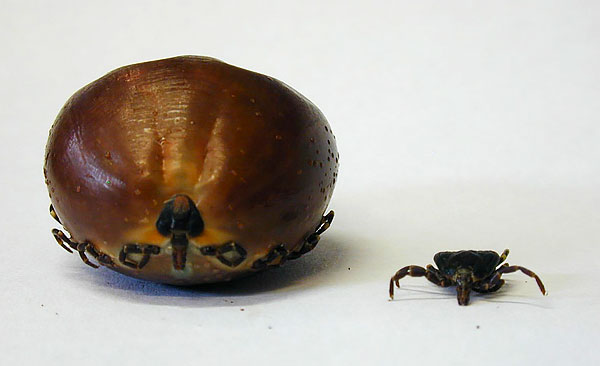
If the parasite is safely sucked blood, he detaches from the host and falls to the ground. Adult females then look for a secluded place under stones, in the cracks of the earth, under leaf litter, where they lay from several hundred to several thousand eggs and die.
Larvae hatch from eggs, which attack mainly rodents and insectivorous mammals, and after saturation, molt into nymphs.Nymphs feed on hares, dogs, cats, hedgehogs, less often on hoofed animals and humans, then molt and turn into adult individuals. At this stage, after saturation, males often mate with females directly on the host's body, and fertilized females repeat the reproductive cycle.
The photo shows a mouse with several mites that have stuck into its skin:
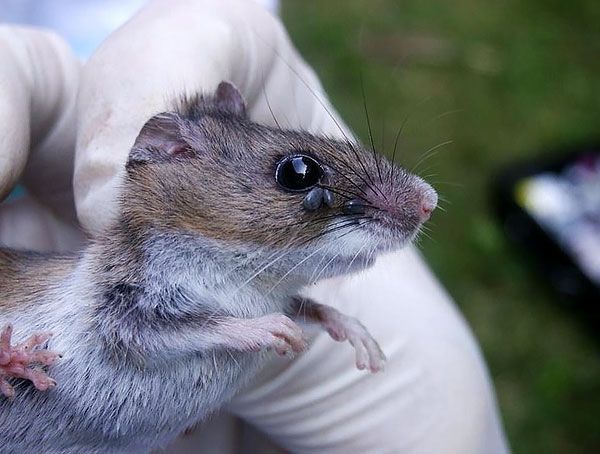
It is adult mites that most often attack humans. However, any individual at any stage of development can be infected with tick-borne encephalitis virus.
To move to a new stage of the life cycle, as well as for reproduction, each individual must necessarily drink blood once.
The largest numbers of mites inhabit meadows, extensive forest glades, river valleys, and pastures, including mountain pastures. Nevertheless, they are very numerous in parks (including within the boundaries of big cities), in summer cottages and gardens, in forest belts. The higher the grass in this or that place and the less often the soil is plowed up there, the more favorable are the conditions for ticks here.

In Russia, Ukraine, Kazakhstan and Belarus, the peak of tick activity and the largest number of their bites are recorded in May, June and July. In the southern regions, bites can be noted as early as the end of March, and in the north they are recorded until August.
Where and when can I get tick-borne encephalitis?
Tick-borne encephalitis can be infected during the season of tick activity in any epidemically dangerous region where these parasites live. Bite with transmission of infection can occur:
- In the park, in the wastelands between the houses;
- In a garden, in a garden, on a personal plot;
- In the forest or on the river bank;
- In a meadow, pasture during a hike or picnic;
- In a mountain valley (for example, in Altai or in Sayan mountains).
The main conditions for the existence and activity of ticks are the presence of grass in which they hide and from which they attack people, as well as various shelters on the ground - leaves, pieces of wood, stones, just cracks. The higher the grass in a given place and the more shelters on the ground, the more ticks there are, as a rule, and the higher the likelihood of their attacks.
Also, the probability of bites is higher in the wilderness, where a large number of different tick hosts (rodents, insectivorous and hoofed animals) dwell.
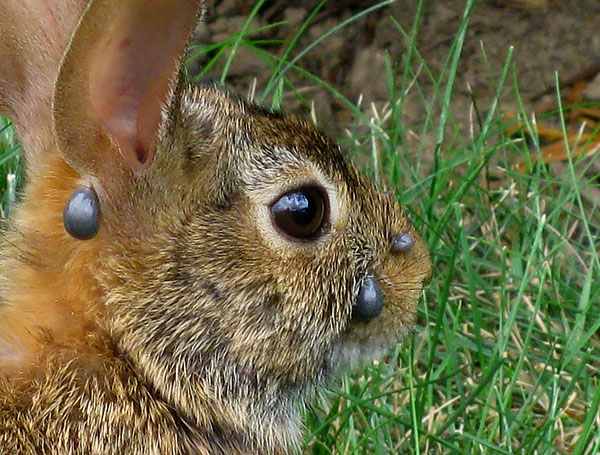
The tick-borne encephalitis virus does not pose a threat to the tick and does not kill it. Therefore, being infected at any stage of its life cycle, a tick can be a danger to humans until the end of their lives.
The peak of the incidence of tick-borne encephalitis and Lyme disease coincides with the peaks of tick activity in nature. The largest number of infections is recorded from May to July, and in warm and hot weather, the parasites are most active, and the bites occur the most.
Memo for parents
Tick-borne encephalitis can be infected not only by tick bites, but also by drinking fresh milk. Goats suffer from encephalitis, becoming infected with ticks, and viral particles spread through their bodies and enter milk. Eating such milk in food without heat treatment can cause infection. Cows, unlike goats, do not get sick with encephalitis, but the virus can also get into their milk from biting ticks.
The geography of tick-borne encephalitis: the most dangerous regions
Tick-borne encephalitis is registered in the middle zone of Eurasia and in some states of Australia.
The area of spread of the disease in Eurasia runs a narrow strip from the North Sea in the west to the Sea of Okhotsk in the east. Its centers and individual cases of infection are known in the Netherlands, Finland, Germany, Ireland, Poland, the Czech Republic, Latvia, Lithuania, Estonia, Yugoslavia.The disease is spread throughout the territory of Ukraine and Belarus, but in Ukraine more or less constant outbreaks are recorded only in Transcarpathia.

In Russia, the disease is recorded in the entire European part south of Karelia, in the Urals and in Southern Siberia. The tick-borne encephalitis lane spreads across the entire country and reaches the Far East, capturing the northern regions of Kazakhstan, Mongolia and China. There are isolated cases of infection in Kyrgyzstan.
Of the regions of Russia, the most severe epidemiological situation is noted in the Sverdlovsk, Tomsk, Irkutsk and Omsk regions, the republics of Khakassia, Tuva and Buryatia, in the Krasnoyarsk Territory. Here, the largest number of cases of bites and infections of infections transmitted by ticks are recorded. At the same time, in the Far East, there is a maximum level of disease mortality with a general lower infection rate.
What to do after a tick bite?
In most cases, tick bites are seen at the stage when the parasite has already adhered to the skin. The tick sucks blood for a very long time, and therefore it is difficult not to notice it on the body (although this happens in various campaigns and expeditions, when people do not undress for a long time and do not bathe).If the body is inspected at least once a day, all adherent bloodsuckers can be detected.
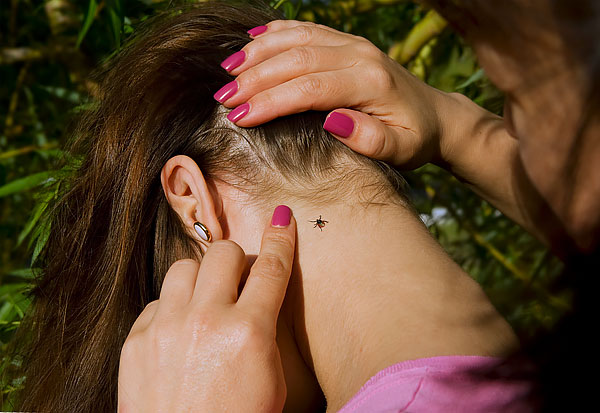
If a tick is found on the skin, it should be removed as soon as possible. If he has not sucked yet, then it is enough just to shake it off, and if he has already sucked it is necessary to remove it from the skin. This can be done in several ways:
- To take out with the help of a special extractor - a tool in the form of a scapula with a groove, whereby the tick is caught in the place of its contact with the skin and taken out with a gentle movement;
- Remove using thread. On it in the middle a tightening loop is made, it attacks on the parasite and draws in at the place of contact with the skin. Then, with gentle movements to the sides, the tick's body lags in the wound and gradually stretches;
- Take out your fingers. In this case, the tick is captured by the body and rotates in the wound. At the same time its proboscis is no longer retained in the tissues and the parasite is easily removed.
After removing the tick, the wound should be treated with any antiseptic agent: an alcoholic solution of iodine, hydrogen peroxide, or medical alcohol.
If, for one reason or another, the parasite's head has remained in the wound, it must be tried to remove it, as a splinter is removed.If this was not possible, then it is advisable to see a doctor who can remove the remains from the skin and properly treat the wound.

It is advisable to save the removed tick and return it to the laboratory for a day. The analysis will allow you to accurately determine whether the tick was infected with tick-borne encephalitis virus or borrelia.
On a note
Laboratories in which they conduct relevant research work at sanitary and epidemiological stations, hospitals and polyclinics in all major cities. The address of the nearest point to which you can hand over the tick for analysis can be obtained by calling the branch of Rospotrebnadzor in a particular area.
If tests show that the parasite is infected with tick-borne encephalitis virus, the affected person must be taken to a medical facility. Here he will be given emergency prophylaxis, which consists in the introduction of the drug immunoglobulin into the body. This tool blocks the further development of the infection and prevents the disease.
Important!
Measures of specific prophylaxis are effective only for the first 4 days after the bite, but at best, the victim must be given immunoglobulin in the first two days.
If it is not possible to deliver the bitten to a hospital or clinic, it is necessary to accurately remember (and better write down) the date of the bite. In the future, when the first signs of the disease appear, the victim should be delivered as soon as possible to the medical facility, and the date of the bite should be reported to the doctor. This will help to take the most effective treatment measures.
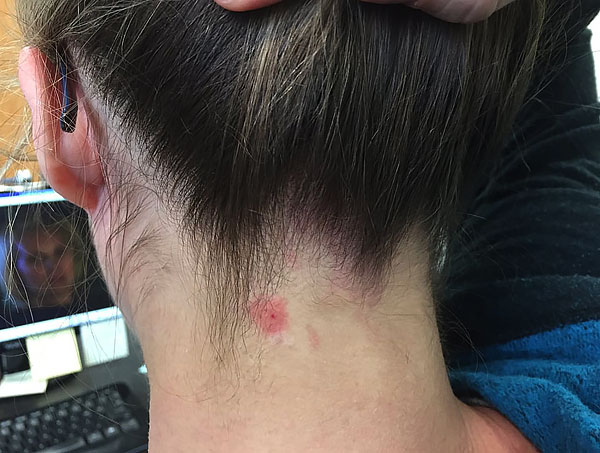
Emergency prevention of Lyme borreliosis is not required, since this disease is relatively easy to treat, and when the first symptoms appear, it is quickly treated.
Signs of tick-borne encephalitis and other tick-borne infections
After a tick bite, it is necessary, at least for a month, to carefully monitor the state of the bitten person, and when signs of tick-borne infections appear, promptly bring him to the hospital.
The incubation period for tick-borne encephalitis and Lyme borreliosis lasts 7-14 days, but in Lyme disease, in some cases it can be much longer - up to a year or more.
The main symptoms of tick-borne encephalitis:
- Typical fever with fever, malaise, nausea, headache and muscle pain;
- Violation of coordination of movements;
- Fainting, dizziness;
- Stiff neck.
Similar symptoms develop in Lyme disease, but the most unambiguous sign of it is the so-called erythema migrans: a large red spot at the site of the bite, surrounded by a clearly separated ring. In the place of erythema, many patients manifest pain, itching or burning.
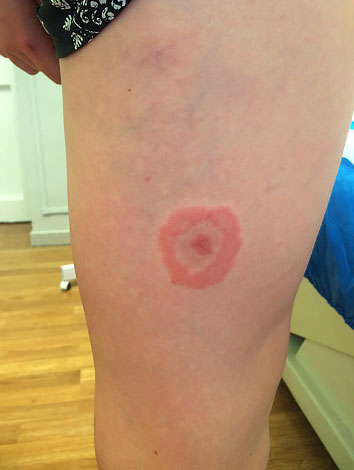
Also, in Lyme disease, allergic reactions are clearly manifested: skin rashes, flu-like syndrome.
Any of these signs most likely indicates the onset of the disease. The sooner the treatment is started, the higher the likelihood of a successful outcome.
Treatment in case of infection
Treatment of tick-borne encephalitis is a significant difficulty due to the lack of funds that allow you to quickly eliminate the viral infection in the body. In medical practice, immunoglobulin preparations are used, but at the stage of acute manifestation of symptoms, these drugs are already ineffective.
High dosages of interferons used for intravenous infusions can have a positive effect, but do not guarantee the destruction of the pathogen, but only provide some protection for the cells not yet affected.For this reason, even in the clinic, the probability of curing the disease is not absolute.
Important!
The later and the more severe the patient is delivered to the clinic, the higher the likelihood of irreversible mental disorders and death.
Treatment of tick-borne encephalitis involves a strict bed rest with restriction of physical activity, parallel symptomatic therapy to normalize the patient’s condition, and taking antihistamines with allergies.
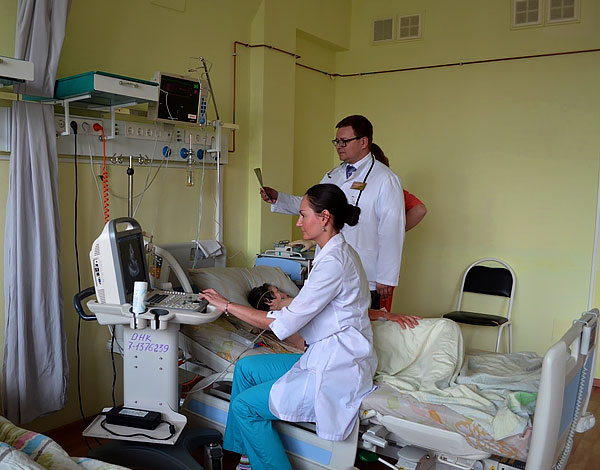
Lyme disease is also treated in the hospital, but with the use of antibiotics. Its pathogen is sensitive to tetracyclines, penicillins, cephalosporins, so the choice of a doctor is wide enough. At the risk of complications in the joints, heart or nervous system, conduct long courses of bicillins.
Lyme disease can turn into a chronic form with ineffective treatment. In this case, the disease is often complicated by arthritis, osteoporosis, and other lesions of the joints.
Ways to prevent tick bites and tick-borne encephalitis infection
Proper behavior in nature and the observance of simple rules can reliably protect against tick bites.
In particular, in the second half of spring and in the first half of summer after a stay in nature, especially in places with uncut grass, it is necessary to conduct a mutual inspection of the body. Adults examine children, and then - each other, special attention is paid to the legs, back, buttocks, groin, armpits, boundaries of the scalp and the places behind the ears. When detected, the mites are shaken off or removed from the skin.
Such inspections are preferably carried out every 1-2 hours. In this case, ticks can be detected immediately after they hit the body, even before suction.
In places where the signs “Attention, ticks!” Or similar are installed, it is better not to walk without need, and after the walk it is necessary to inspect the body.

In regions with a high risk of tick-borne encephalitis infection, additional measures are required:
- On the nature you need to go in special clothes. Pants should be tucked into socks, or they should be gum, tightly covering the leg. Underwear, shirt or jacket should be tucked into the pants, on the sleeves should also be elastic bands, under which the tick will not crawl. If you plan to stay in the forest with a large number of bushes, it is desirable that the hood or jacket should be on the jacket or jacket. All these measures will reduce the likelihood of mite penetration to the skin;
- Clothing for entering the nature should be light, so that the parasite on it can be easily detected;
- Clothes or body should be treated with repellents, preferably on the basis of DETA - they are reliable protection from ticks and other blood-sucking parasites.

Directly in nature should be kept away from high grass and shrubs.
In the most epidemiologically dangerous regions, it is advisable to make an anti-encephalitis vaccine that will provide reliable protection against the disease even with a bite.
Also among the preventive measures include informing the public about the rules of behavior in nature and the prevention of tick bites. For this purpose it is useful:
- To conduct class hours and conversations in schools on the subject of the correct behavior of schoolchildren in nature;
- To consult parents in preschool and schools about precautionary measures for protection against tick-borne encephalitis;
- Make noticeable and eye-catching newsletters, stands, posters, leaflets, booklets, folders with drawings and photographs that are hung or distributed in clinics, hospitals, schools and kindergartens, at the entrances of houses;
- To instruct teachers in kindergartens and teachers in schools, holidaymakers in various sanatoriums, to prepare in advance orders for such instructing;
- At the beginning of the season, the activity of ticks or in front of him to publish reminders in newspapers and reports on local TV channels with warnings about the danger of bites and recommendations on how to avoid them;
- Make alerts in schools about the need to vaccinate students and their parents in epidemiologically dangerous regions;
- Involve students in educational work - develop information stands and make warning signs, conduct thematic biology lessons with a demonstration of live ticks.
The picture below shows a version of the information stand on tick-borne encephalitis:
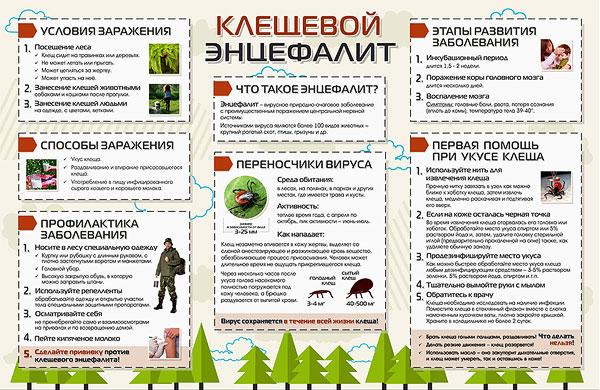
The main responsibility for compliance with the rules of protection against tick bites and prevention of tick-borne infections in children lies with the parents. Measures to protect themselves from infection are not officially required even in the most dangerous regions. But on how diligently and to what extent both adults and children will comply with these measures, their safety in nature and the likelihood of a successful outcome from the bite of a parasite depend.
Be careful in nature, beware of ticks and help your loved ones protect themselves from them!
Useful video about the danger of ticks for humans
How to protect yourself from tick bites in the forest by 99%


